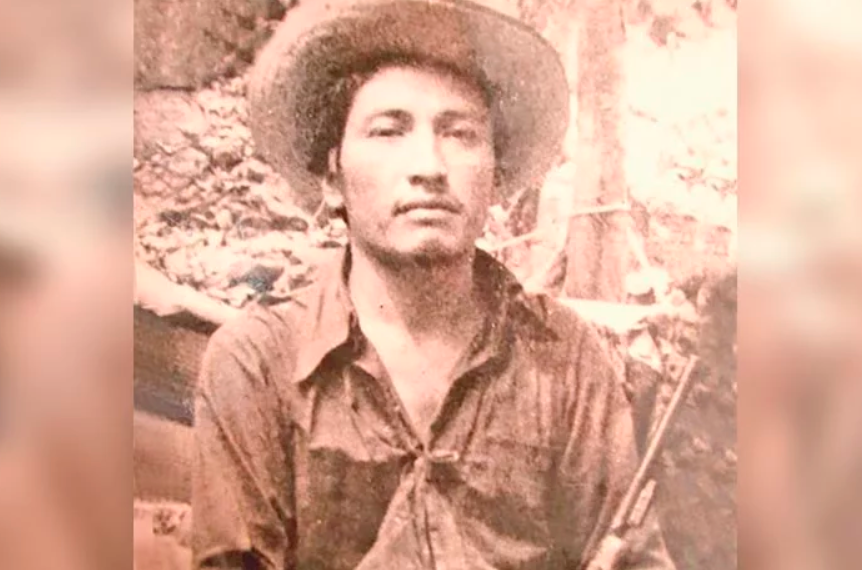Raúl Romero*
From their beginnings, more than 100 years ago, the rural teacher training colleges and their graduates have embodied a critical educational project, from below, in accordance with the needs of the impoverished and oppressed peoples. With the revolutionary, agrarian and socialist spirit of the time, the rural teacher training colleges served to train teachers who drink atole, eat tortillas with chili and live with the people, as a Ñuu savi community would demand of General Lázaro Cárdenas several decades ago, according to Luis Hernández Navarro in his wonderful book La Pintura en la Pared. Una ventana a las escuelas normales y a los normalistas rurales. (The Writing on the Wall. A window into the normal schools and to the rural student teachers.)
The critical character with which the students of the rural teacher training colleges are trained, their organizational tradition, as well as their popular origin -mostly children of peasants and indigenous people- has resulted in generations of teachers who fight in defense of public, critical and scientific education; for improvements in their working conditions, for democratic unions, and for critical pedagogical projects.
The organizational tradition of the normalistas, their training in critical thinking, and their permanent defense of free public education, has drawn a constant threat from the Mexican State, which has not only tried to disappear the schools with their dormitories and canteens, but has also persecuted, criminalized and repressed their students and graduates. By attacking the teacher training colleges and their students, the State is not only attacking a valuable educational project; it is also attacking that seed of struggle and freedom represented by many teachers, key links in grassroots organizational processes and in numerous experiences of struggle throughout the country. This was what moved Gustavo Díaz Ordaz when in 1969 he dealt a brutal blow by closing 14 rural teacher training colleges.

Whether by asphyxiating them economically, repressing them directly, or spying on and infiltrating their organizations, the Mexican State waged a counterinsurgency war against the rural teacher training colleges and their students. In its objective, the State not only sought to avoid or erase from history a long history of revolutionary experiences, but also to prevent this tradition of organization and critical reflection from continuing to have a presence in the country.
In the neoliberal era, the State’s counterinsurgency war against the teacher training colleges and their students was complemented by the market’s war against the public in general and against free public education in particular. For decades the normales and their students not only experienced repression and stigmatization, but also faced more severe economic problems. At the same time that the normalistas fought and still fight for more resources and places to study in their schools, for dignified and well paid jobs, they have to face the criminalizing discourse that went from placing their schools as devil schools and nests of communists to violent groups linked to organized crime.
In Guerrero, particularly for the students of the Normal Rural Raúl Isidro Burgos, the counterinsurgent and neoliberal war against the normalismo took on a characteristic also observable in other parts of the country: disputes for territorial control between organized crime enterprises with their political arms and their legal and illegal armed forces. Thanks to the Interdisciplinary Group of Independent Experts (GIEI), today we know that the tragic events of September 26, 2014 involved the coordinated participation of armed forces of organized crime and armed forces and authorities of the Mexican State. In Ayotzinapa we saw and experienced the degree of symbiosis between the State and organized crime, an association that operated during the crime, that has operated to maintain it in impunity, and that touched municipal presidencies and police, governors and state police, the Army, the Cisen (National Intelligence Center, the Navy, the Presidential General Staff and the Presidency of the Republic. That narco-State of the past continues to be a thing of the present, to the extent of preventing us from accessing truth and justice. The Mexican State, from some people and institutions, continues to guarantee impunity to that complex and gigantic criminal network.
We do not know if the State and its Army obey or obeyed organized crime, or if organized crime serves the State and its Army. Investigating that relationship is not idle, it will clear up doubts and help to clarify the Ayotzinapa crime and many others that happened and are happening. For now, two things are certain: in that symbiosis between the State and its Army, on the one hand, and organized crime on the other, lies the responsibility for the Ayotzinapa crime. There are names and surnames of those responsible, yes, but there is also structural, institutional and trans-sexennial responsibility. The second and more serious certainty is that, almost nine years after that tragic night, 43 students are still missing.
*Sociologist
Original text was published in La Jornada on August 3rd, 2023. https://www.jornada.com.mx/2023/08/03/opinion/014a1pol
English translation by Schools for Chiapas.
